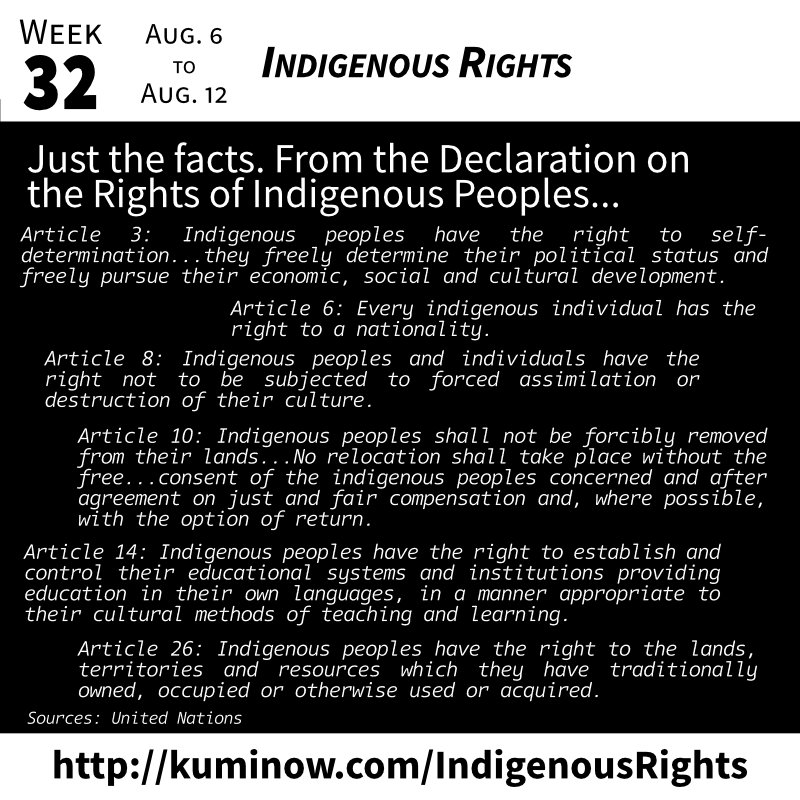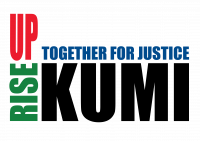Just the Facts: Indigenous Rights


| Understanding Indigenous Rights: Just the Facts. From the United Nations Declaration on the Rights of Indigenous Peoples… |
|---|
The declaration is several pages long and, like the UN Declaration of Human Rights, is worth reading in full. However, some of its most critical rights, when looked at from the perspective of Palestinians, include:
- Article 3: “Indigenous peoples have the right to self-determination. By virtue of that right they freely determine their political status and freely pursue their economic, social and cultural development.”
- Article 6: “Every indigenous individual has the right to a nationality.”
- Article 8: “Indigenous peoples and individuals have the right not to be subjected to forced assimilation or destruction of their culture.”
- Article 8 also instructs states to avoid, or provide redress for “(a) Any action which has the aim or effect of depriving them of their integrity as distinct peoples, or of their cultural values or ethnic identities; (b) Any action which has the aim or effect of dispossessing them of their lands, territories or resources; (c) Any form of forced population transfer which has the aim or effect of violating or undermining any of their rights”
- Article 10: “Indigenous peoples shall not be forcibly removed from their lands or territories. No relocation shall take place without the free, prior and informed consent of the indigenous peoples concerned and after agreement on just and fair compensation and, where possible, with the option of return.
- Article 14: “Indigenous peoples have the right to establish and control their educational systems and institutions providing education in their own languages, in a manner appropriate to their cultural methods of teaching and learning.”
- Article 26: “Indigenous peoples have the right to the lands, territories and resources which they have traditionally owned, occupied or otherwise used or acquired.”
This week’s facts come from:
- “Engineering Community: Family Unification, Entry Restrictions and other Israeli Policies of Fragmenting Palestinians” from Al-Haq
- “Israel: Thousands of unregistered Palestinians fear deportation, separation from families” from Middle East Eye
- “Israel: Interior Ministry Blocks Palestinian Family Reunification Requests” from Palestine Chronicle
Learning More
There are many resources out there for learning about indigenous peoples and their struggles around the world. A few places to start include:
- This study guide on indigenous rights from the University of Minnesota Human Rights Library
- Amnesty International’s page on indigenous peoples
- The International Work Group for Indigenous Affairs (IWGIA), specifically their free PDF book The Indigenous World 2021.
To go deeper, we will be developing an extensive list of Additional Resources at the bottom of this week’s entry as well as a YouTube playlist on the subject.
